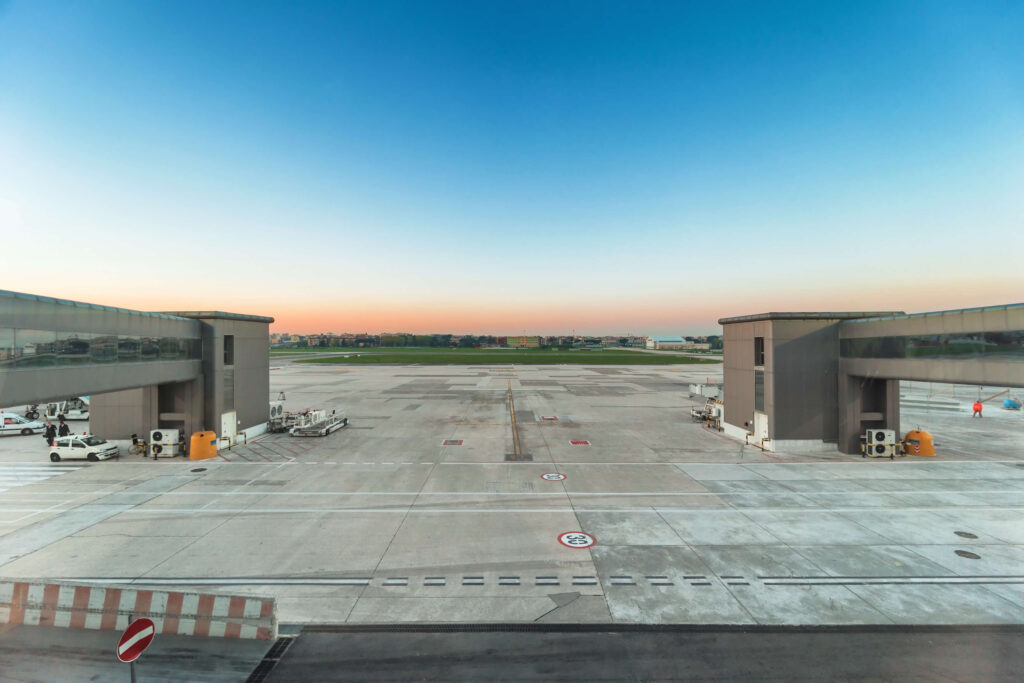Airports
Airports have strict standards for the quality of the concrete.
Airport runways and pavements have very strict standards for the quality of the concrete. Among many other concerns, the potential for foreign object damage requires strict attention to reduce the chances of spalling or broken concrete. Chunks of loose concrete could be the result of spalling due to corrosion or deterioration or it could be a weakened area at the joints. Both risks are the result of concrete shrinkage. Corrosion results from the ingress of water and de-icing chemicals in contact with the reinforcement, which occurs almost immediately when there is cracking. Joints are often placed close together because of the shrinkage potential, which increases the lineal footage of joints on a runway and the potential of breaking the concrete at the joint. The only way to avoid this is to constantly and meticulously maintain the joints over the lifetime of the pavement. Since airports can only shut down a runway for a few hours, this constant maintenance cycle can be a burden to the owner.
By decreasing the shrinkage potential of airport runways and pavements, PREVent-C can help avoid tedious maintenance, tight joint spacing, and foreign object damage. The result is a pavement that needs far less maintenance over its lifetime, is possibly completed during a faster construction process, and has a reduced potential for airplane engine damage. The integrity of the compressive strength and freeze-thaw resistance is maintained while achieving a surface that performs better and lasts longer.
Case Studies for Airport Application




